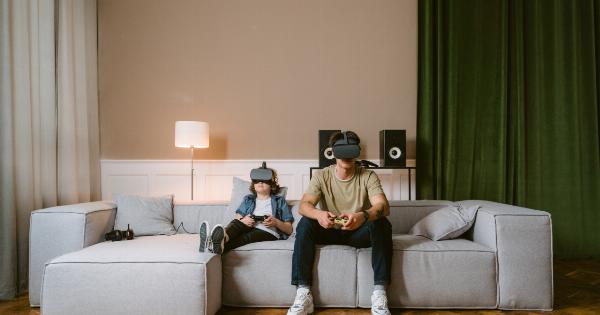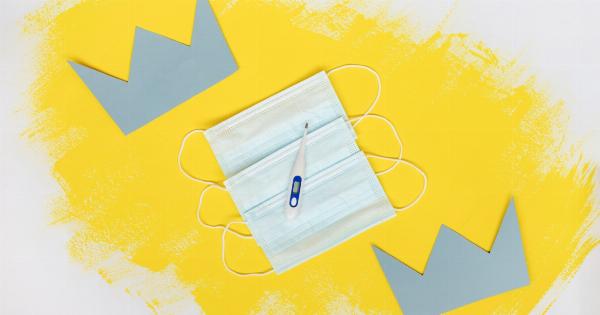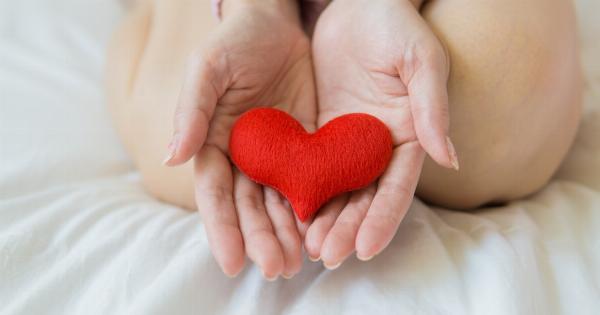Migraine is a neurological condition characterized by severe headaches, often accompanied by other symptoms such as nausea, vomiting, and sensitivity to light and sound.
While the exact cause of migraines is still not fully understood, researchers have identified various triggers that can initiate or worsen the condition. Understanding these triggers can help individuals with migraine manage their symptoms effectively. Here are the 33 most common triggers of migraine:.
1. Stress
Stress is a well-known trigger for migraines. Emotional stress, such as anxiety or tension, and physical stress like overexertion or lack of sleep can contribute to the onset of a migraine.
2. Hormonal changes
Changes in hormone levels, particularly in women, can trigger migraines. These include fluctuations during the menstrual cycle, pregnancy, and menopause.
3. Weather changes
Many people with migraines report sensitivity to weather changes, such as changes in barometric pressure, temperature, or humidity. Stormy weather or sudden climate shifts can trigger a migraine.
4. Certain foods and beverages
Several types of foods and beverages are commonly reported as triggers for migraines. These include aged cheeses, processed meats, chocolate, caffeine, alcohol (particularly red wine), and foods with additives like monosodium glutamate (MSG).
5. Strong smells
Strong odors from perfumes, smoke, cleaning products, or certain chemicals can trigger migraines in some individuals. Paying attention to smells in your environment can help you identify potential triggers.
6. Skip meals or fasting
Skipping meals or fasting for an extended period can lead to low blood sugar levels, which can trigger a migraine in some individuals. Maintaining regular meal schedules and ensuring a balanced diet can help manage this trigger.
7. Dehydration
Dehydration is known to trigger migraines in some people. It’s important to stay properly hydrated throughout the day, especially during hot weather or when engaging in physical activities.
8. Bright lights and flickering screens
Exposure to bright lights, such as fluorescent lights or strong sunlight, and flickering screens like those on computers or televisions, can trigger migraines. Wearing sunglasses and using screen filters may help reduce the risk.
9. Changes in sleep patterns
Irregular sleep patterns, including both insufficient sleep and excess sleep, can trigger migraines. Maintaining a consistent sleep routine and practicing good sleep hygiene can help manage this trigger.
10. Physical exertion
Vigorous physical activity or strenuous exercise can trigger migraines, especially if you are not accustomed to it. It is important to exercise regularly but avoid overexertion.
11. Cigarette smoke
Exposure to cigarette smoke, either directly or secondhand, can trigger migraines in some individuals. Avoiding smoke-filled environments may help prevent migraine attacks.
12. Alcohol consumption
While some people experience migraines after consuming a specific type of alcohol, such as red wine, any form of alcohol consumption can trigger a migraine. Limiting or avoiding alcohol may be necessary for those prone to migraines.
13. Caffeine consumption
While some people find relief from migraines by consuming caffeine, excessive intake or sudden withdrawal from caffeine can also trigger migraines. Individual sensitivity to caffeine varies, so moderation is key.
14. Hormonal medication
Hormonal medications, such as oral contraceptives or hormone replacement therapy, can trigger migraines in certain individuals. If you experience migraines while on hormonal medications, consult your healthcare provider.
15. Medications
Some medications, such as nitroglycerin, vasodilators, and certain oral contraceptives, are known migraine triggers. If you suspect a medication to be causing your migraines, discuss alternatives with your healthcare provider.
16. Allergies
Allergies, particularly to certain foods or environmental allergens, can trigger migraines in susceptible individuals. Identifying and avoiding allergens may help prevent migraine attacks.
17. Bright or flashing lights
Bright or flashing lights, such as strobe lights or bright sunlight reflecting off water or snow, can trigger migraines in some individuals. Wearing sunglasses or avoiding such settings can reduce the risk.
18. Loud or repetitive noises
Loud or repetitive noises, such as construction sounds or loud music, can trigger migraines in susceptible individuals. Using earplugs or avoiding noisy environments may help reduce the risk.
19. Inadequate sleep
Lack of sleep or poor sleep quality is a common trigger for migraines. Establishing a regular sleep routine and creating a sleep-friendly environment can help prevent migraine attacks.
20. Physical or emotional stress
Stress, both physical and emotional, can trigger migraines. It is important to practice stress management techniques, such as relaxation exercises or therapy, to minimize the risk.
21. Menstruation
Many women experience migraines related to their menstrual cycle. The hormonal changes before, during, or after menstruation can trigger migraines. Tracking your menstrual cycle and working with your healthcare provider may help manage this trigger.
22. Hormonal fluctuations during pregnancy
Pregnancy causes significant hormonal changes in the body, which can trigger migraines in some women. Consulting with your healthcare provider for appropriate management strategies is essential if you experience migraines during pregnancy.
23. Menopause
Menopause and the hormonal fluctuations associated with it can trigger migraines in some women. Working closely with your healthcare provider can help alleviate symptoms and establish effective management strategies.
24. Food additives
Certain food additives, such as MSG, nitrates, and artificial sweeteners like aspartame, have been reported as common triggers for migraines. Reading food labels and avoiding products with these additives may be helpful.
25. Physical injury or trauma
Physical injury or trauma, such as a blow to the head or neck, can trigger migraines in some individuals. Taking precautions to prevent injury and seeking medical attention when needed is crucial.
26. Certain medications
Some medications, such as vasodilators and oral contraceptives, have been linked to migraines in certain individuals. If you suspect a medication to be causing your migraines, consult your healthcare provider to explore alternatives.
27. Changes in altitude
Rapid changes in altitude, such as during air travel or driving through mountains, can trigger migraines in susceptible individuals. Staying hydrated and managing other triggers can help reduce the risk.
28. Low air quality
Poor air quality, such as pollution or the presence of strong odors, can trigger migraines in some individuals. Avoiding areas with heavy pollution and ensuring proper ventilation indoors may help reduce the risk.
29. Visual stimuli
Unusual or intense visual stimuli, such as bright or rapidly flickering lights, certain patterns, or visual stressors, can trigger migraines in vulnerable individuals. Identifying and avoiding these triggers can be helpful.
30. Intense physical exertion
Intense physical exertion, such as heavy lifting or intense workouts, can trigger migraines in susceptible individuals. Gradual progression of physical activity and practicing proper form can help minimize the risk.
31. Certain foods and food combinations
While individual sensitivities may vary, some common trigger foods include aged cheeses, preserved or fermented foods, chocolate, citrus fruits, and certain nuts. Identifying and eliminating trigger foods from your diet may help manage migraines.
32. Lack of physical activity
Sedentary lifestyles and lack of physical activity can contribute to the onset of migraines. Engaging in regular exercise, even low-impact activities like walking or yoga, can help reduce the frequency and intensity of migraines.
33. Emotional triggers
Strong emotions, such as excitement, anxiety, frustration, or sadness, can trigger migraines in susceptible individuals. Identifying emotional triggers and practicing stress management techniques or therapy can be beneficial.































